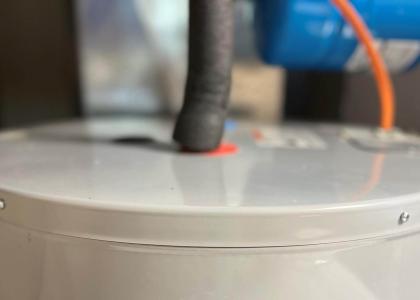Beneficial electrification stands out as one of the best ways to decarbonize industry. An ACEEE report released today shows that while it is gaining ground in several sectors, including metals and chemicals, its rapid scaling in industry still faces hurdles and will require considerable investment in R&D, clean power sources, and energy storage.
To fight climate change, increased industrial use of electricity from zero- or low-carbon sources (known as beneficial electrification) will be critical. The U.S. industrial sector, which includes manufacturing, accounts for 28% of the nation’s primary energy-related greenhouse gas (GHG) emissions (22% excluding feedstocks).
Electrification is a promising strategy for many industrial sectors. Across the United States, there are already many good examples to emulate and opportunities to pursue. To learn more, we talked with Ed Rightor, director of ACEEE’s industrial program and lead author of the new report, Beneficial Electrification in Industry. Ed, along with three other speakers, will discuss this topic in a webinar today.
Why is it so important that we electrify industrial processes as quickly as possible?
We’re generating more and more of our electricity from renewable resources, and that’s going to need to keep increasing quickly. As that happens, it’s crucial to electrify industrial processes so they can take advantage of that lower-carbon grid-supplied electricity; this is a key step to allow us to reduce GHGs. We really need to work on this transition right now for industrial facilities to take full advantage of a far greener grid in the coming years.
What are the most promising examples of electrification that you see today?
Promising examples include electric technologies for moderate-temperature process heat, materials processing (e.g., infrared, microwave, induction heating), advanced machine drives, and intermittent fuel switching (e.g., hybrid boilers that can use either gas or electricity).
We can accelerate the adoption of these technologies, as well as emerging and transformative technologies, with partnerships at concentrated industrial zones and industrial parks (e.g., the Houston Ship Channel, Port of Los Angeles, Indiana steel mills) that lower adoption hurdles, test new technology, and establish infrastructure to support low-carbon solutions.
Are there any low-hanging fruit that industry should focus on?
Early opportunities include improving the energy efficiency of electric equipment that is already in use (e.g., motor drives, compressed air), the use of hybrid boilers, and the use of electric technologies to provide moderate-temperature heat (heat pumps, modular steam generation units, and infrared heating).
ACEEE has launched an Industrial Decarbonization Initiative. What are its goals?
We’re enabling a future where industry’s combined energy and GHG footprint approaches net zero and where industry can make a crucial contribution to reducing global GHGs 80% by 2050.
Our multi-pronged strategy includes:
- Convening industry, labor, and NGO stakeholders to identify common ground on policies to enable industrial decarbonization.
- Pursuing research and best practices that facilitate the shift of industry to net-zero GHGs by 2050.
- Catalyzing partnerships among government, business, and NGOs for decarbonization.
Industry is known to be risk-averse and has a lot of expensive equipment that lasts a long time, which is an obstacle to replacing existing equipment with efficient new equipment. What can we do about this?
Early pursuit of low-capital options is a great place to start. These options include energy efficiency, fuel switching, and adoption of low-capital, low-carbon approaches like low-temperature process heat or materials preparation with electric technologies. By highlighting the value of nonenergy benefits (e.g., improved productivity; better product quality, environmental compliance, capacity, safety, and waste reduction), we can often justify equipment replacement and minimize risk.
In your report, you talk about the importance of smart manufacturing profiles. What are these and why do they matter?
Smart manufacturing (SM) uses information and computer technology to increase flexibility in production while reducing waste of materials and energy. SM profiles provide an industry-standard way to create sharable digital templates for any manufacturing asset (like a piece of industrial equipment or machinery), allowing digital data communication and analytics. The profiles allow direct measurement of energy consumption in real time so that it can be managed more effectively, thereby reducing energy use and GHG emissions.
When we collect such data from numerous pieces of equipment, we are essentially crowdsourcing expertise to create profiles. Using these profiles for electric technologies could help accelerate adoption of new technology and quantification of energy and nonenergy benefits. Then, any company with a certain type of machine or asset can leverage its capabilities to optimize both GHG reductions and productivity.
The industrial sector accounts for a lot of jobs and exports. How do we decarbonize industry without harming either?
We can do a few things. First, we can incentivize electrification in discrete and process manufacturing, and we can provide connections to low-carbon energy so that electrification can be beneficial. Second, we can deploy cross-functional teams to the top 500 GHG-emitting manufacturing facilities to do energy audits and provide training and technical assistance under the DOE’s existing Better Plants program. Third, we can rebuild supply chains devastated by COVID-19 by enabling digitization and smart manufacturing, and by minimizing hurdles and restrictions associated with the pandemic. Last, we can work with local industries to identify and train workers to fill jobs working with electric technologies, and quickly get new employees up to speed on the new equipment.



